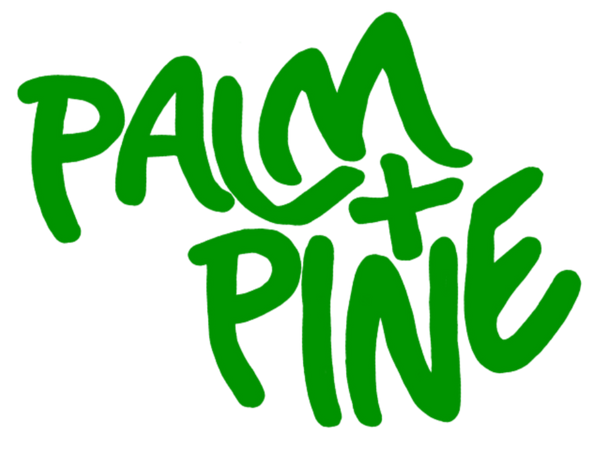Pest Control: How to Identify and Remove Plant Pests
House plants and critters can go hand-in-hand. Here are some common critters, how to spot them, and how to get rid of them before they harm your plants
When keeping house plants, the occasional pest problem will be inevitable. If you notice sudden and rapid leaf loss, stunted growth, curled leaves, or otherwise unusual foilage deformities- always look for pests!
If caught early, it is typically easy to eradicate a pest problem. Best rule of thumb is to quarantine the plant. Rinse/hose it down and physically remove any pests. You should also apply a Neem solution.
Pests come with the territory of keeping indoor plants. Little bugs can take up residence in your plants and cause some serious damage! Often times if your plant is on a downward spiral and can't quite figure out what is going wrong- it could be suffering from an infestation.

The best way to prevent a serious infestation is to know what to look for! Below is a list of the most common house plant pests, signs to help identify them, and how to best eradicate them.
First, let's talk about prevention....
Inspect your plants frequently, particularly in the warmer months when infestations are more frequent. Always remove dead and decaying leaves. These often serve as nesting grounds for bugs.

Wipe down your foliage once a week- this has a myriad of benefits but can also help remove any hidden insect eggs and gives you the time to really look at your plant and note signs of pests.
Keep your plants thriving! Pests most often attach distressed and unhealthy plants. Be sure that you are providing the most ideal and optimal environment for your plants.
Spray plant foliage with a diluted Neem oil solution through the warm months to keep pests at bay.
Common Types of Plant Pests:
Aphids: Are also known as "plant lice". Aphids appear in clusters and feed on soft stems and tender new growth. Aphids are highly mobile, can fly, and spread rapidly. Aphid infestation can cause stunted growth, crinkled leaves, or rapid leaf loss. To eradicate: hose down the plant thoroughly to dislodge the bugs and apply Neem oil. If there are still visible bugs attached to the stems or foliage, remove with a paper towel.

Brown Scale: These are flat, round bugs that are not always brown! Scale can show up as black, white, or tan. They excrete a sticky substance and are easily visibly evident on the foliage and stem of plants. A plant with scale can deteriorate very quickly. In order to control the spread, each scale must be removed. If a piece of foliage is heavily infested, it is usually just better to remove the entire leaf from the base. For more mild infestations, use a soap and water solution to loosen them from the plant, and physically remove the scales one by one. Treat thoroughly with Neem or insecticide... scale often requires a few treatments to eradicate.
Fungus Gnats: Fungus gnats are often found dwelling in the soil. They feed on the roots of a plant. Typically they are easy to treat by adding either Neem or an all-natural insecticide directly into the soil.

For heavy infestations, remove the plant from the pot. Clean out the pot thoroughly with soap and vinegar and repot with entirely fresh soil.
White Mealy Bugs: A very common nuisance, white mealy bugs appear as soft, white clusters that look similar to cotton. They multiply rapidly and are capable of doing heavy damage once infested. Most often a mealy bug infestation is characterized by yellow/discolored leaves, rapid leaf loss, stunted growth, and wilting. To eradicate: spray affected foliage thoroughly with diluted Neem and leave it alone. Check back in a few days to see if any pests have returned. Repeat the treatment process until there are no more signs of infestation.
White Flies: These guys are tiny, white, and flying- just as their name suggests. They are a very common pest for indoor plants. They are mobile and can cause a lot of damage if left untreated. They sometimes seem to appear out of nowhere because their eggs and larvae are very tiny and hard to detect. The flies themselves are visibly evident and usually clustered on the underside of foliage. Plants infested with white flies typically have yellow leaves that drop rapidly. Because they can fly, spraying the plant only helps to treat eggs and larvae. You can use a diluted Neem oil or insecticidal soap to spray down the plant to kill any eggs or baby flies. The adult flies will likely fly off the plant when disturbed and will take up residence in another plant. To trap these, the best thing to do is to use sticky fly tape and place it on/around the infested plants. Continue to treat the plant with Neem so any unhatched plants are destroyed.
Spider Mites: These tricky little guys are hard to see! They are very small and are typically recognized by their webbing on the underside of leaves. They are sucking pests and quite literally suck the color out of the foliage. They tend to leave behind discolored and yellowing leaves. A common indicator of spider mite infestation is curled or deformed leaves. This is a result of mites nesting. The best way to dislodge them is to forcefully spray the underside of the leaves with water and apply Neem or an all-natural pesticide.
We hope this helps! As always, if you need help with pest control you can schedule a Plant Doctor virtual visit here.

